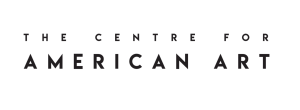Today, “guerrilla art” is a loosely applied catchall used to describe artwork that appears unannounced beyond art-sanctioned spaces, such as street corners, billboards, TV shows, and radio waves. Most commonly, it conjures images of graffiti tagged on city walls, political theater staged in parks, and agitprop wheat-pasted posters. It is referenced in exhibition catalogues and scholarly texts as art that surprises its viewers, catching them unawares with words, pictures, and performances that disrupt the regular or mundane flow of things, temporarily jolting interlocutors into a different experience of the space, people, and infrastructure surrounding them. But “guerrilla art” also applies to works that remain imperceptible, lingering or slowly unfolding without documentation, confrontation, or aggression for weeks or years; as well as befitting artworks that never delineate a clear political position or message but instead aim to cultivate urban survival techniques. As such, guerrilla art is an elusive, vague classification within contemporary art, applied to many different actions, mediums, and aims, and typically presented as discrete, idiosyncratic instances of redirection or resistance.
In this talk, I aim to provide an alternative historical narrative for guerrilla art in the U.S. that emerged in the late 1960s and gained legibility throughout the 1970s. Crucial historical context for understanding the stakes of artists’ use of low-tech tactics, such as media hijacking, sabotage of public space, deception, and misinformation in conceptual and performance-based art has yet to be adequately analyzed: namely, the expansion of police discretion, surveillance technologies, and carceral debt, and its conditioning of artists’ tactical decisions in art. Guerrilla art can be revisited, I argue, as a manifestation of artists’ punitive literacy: an attunement to changing sentencing protocol, anti-riot laws, zoning logics, the relationship between law enforcement and medical doctors, the injunctive power invoked by museum to silence artists, and the advent of computerized predictive policing. Rather than center the moment of confrontation so often fetishized in discussions of guerrilla art, I look instead to the “before” and “after”—to artists’ anticipation of arrest and punitive consequence—to challenge the common narrative that these artworks are merely ephemeral, momentary disruptions of institutional power. Through cross-analysis of works created in the ‘70s by Adrian Piper, Asco, Chris Burden, and others, I contend that artists’ punitive literacy exposes a shadow-structure linking the work, one that reveals the racialized and gendered politics of risk-taking and its wide-ranging impact on American canon formation.
Faye Gleisser is an interdisciplinary art historian, curator, arts writer, and museum educator based in Bloomington, Indiana, where she is Assistant Professor of Contemporary Art History, and the Faculty Director of the Emerging Artist in Residency Program at Indiana University. In her research and teaching, Gleisser applies question-based inquiry and critical race and feminist theory to examine the socio-political conditions shaping 20th and 21st century art, archival silences, and histories of photographic surveillance. Her scholarship has appeared in Art Journal, Journal of Visual Culture, Artforum, and ASAP/J, as well as in exhibition catalogs for Out of Easy Reach, The Propeller Group, and the Prospect.5 Triennial. In 2020, she was awarded a Postdoctoral Research Fellowship at the Smithsonian American Art Museum in support of her book, forthcoming with University of Chicago Press, which examines the entangled relationship of policing, risk management, and conceptual and performance-based guerrilla art in the United States.
Organised by Professor David Peters Corbett (The Courtauld) and Dr Tom Day (The Courtauld).






